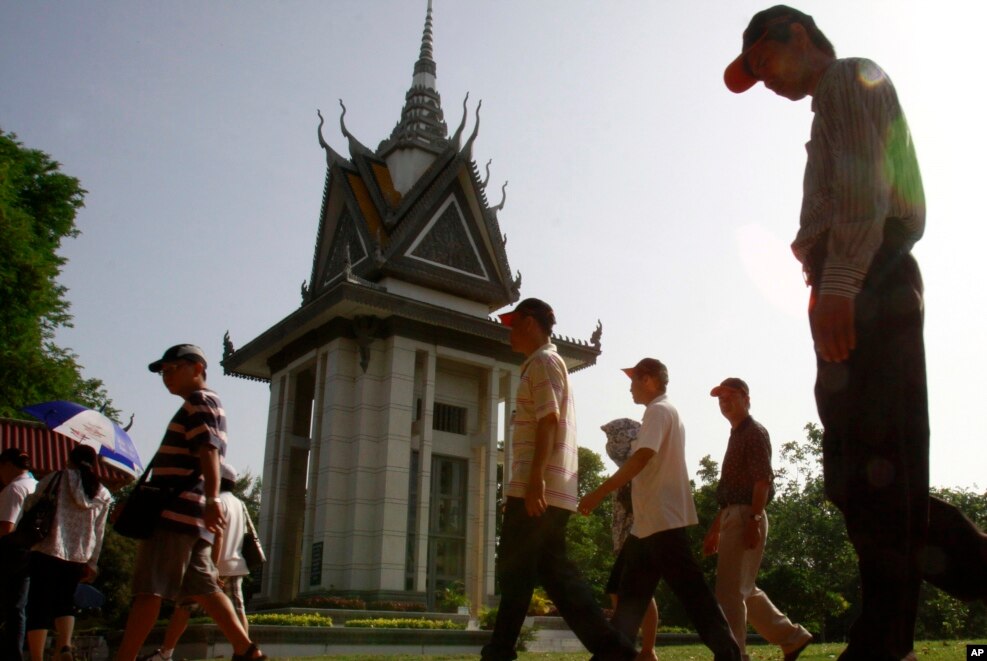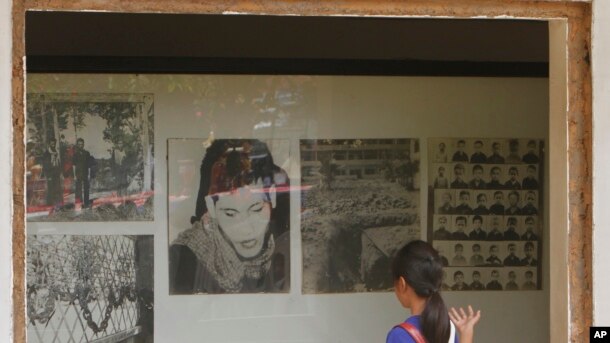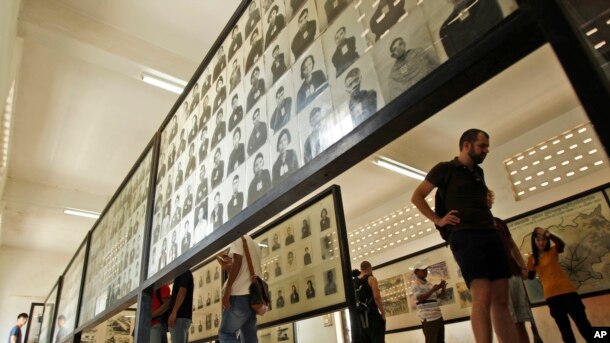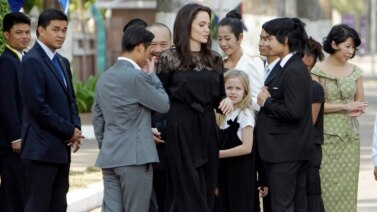
The number of tourists visiting Cambodia's genocide sites has more than tripled over the last 10 years. They are visiting memorials for the nearly 2 million people killed under Pol Pot and his Khmer Rouge.
But the sharp increase in tourism is creating problems. Visitors are disturbing some sites, and making preserving the memories difficult.
Genocide tourism
Choeung Ek is the best known of the genocide sites. It is also known as the Killing Fields. The site is located 17 kilometers south of Cambodia's capital city, Phnom Penh.
Each day, tourists arrive by tuk-tuk (a three-wheeled taxi), motorbike and air-conditioned buses.
Chhour Sokty is director at Choeung Ek. He said that in the 11 years he has been working there, the number of visitors has increased from 100 to 800 a day. He believes media promotions, road improvements, and additions such as public toilets are helping bring more people to the site.
The place is not a happy one. Human skulls are stacked neatly in a stupa, a round-shaped monument. They are surrounded by mass graves. Here, thousands of people were beat to death and buried. They were all victims of the 1975-1979 mass killings by Pol Pot's men.
Kob Kalyaney works for a private tour agency that brings people to the Killing Fields. She said, "Tourists want to learn if the history is real and they want to witness it."
There are hundreds of sites across Cambodia like Choeung Ek. The difference is that here, and at the S-21 extermination camp in Phnom Penh, people pay to enter.
The cost helps bring income for people such as book sellers, street vendors, tuk-tuk drivers, tour companies and even beggars.
Leaving a mark
Unfortunately, too many tourists have left their mark.
Some tourists write graffiti on prison walls at S-21 in Phnom Penh. This is the site of the Tuol Sleng Genocide Museum, where Pol Pot's victims were processed before being sent to the Killing Fields.

At S-21 visitors can see buildings, prison cells and graphic displays of paintings and photographs, along with tools of torture.
At Choeung Ek, some people innocently tie ribbons and notes to the mass graves. But others collect pieces of bones, smoke cigarettes, or eat on the steps of the bone-filled stupa. Many ignore rules restricting cameras and asking for silence.
Youk Chhang is the executive director of the Documentation Centre of Cambodia (DC-Cam). He said one reason people behave inappropriately at the sites is because they do not know the rules. But he added that photos of Khmer Rouge leaders often had to be replaced because visitors would write graffiti on them.
"People get so upset when they see the photographs of the Khmer Rouge leaders so they write on it... I think that it can be bad, it can be good," he said. "You cannot stop people from being, or feeling upset."
He added that neither Choeung Ek nor S-21 were designed to be businesses run for profit.
"We should preserve for our children, not for the tourists. But tourists are welcome if they want to visit, if they want to see it, (if) they want to understand it, they're welcome. That's the whole purpose of the preservation of the site," he said.
Evidence and a sanctuary
The genocide sites are not only important for students and visitors, however. The Khmer Rouge Tribunal is using the bones and human remains as evidence.
The Tribunal has spent the last decade prosecuting Pol Pot's surviving lieutenants. It has secured three convictions so far for crimes against humanity.
Currently, two former leaders, Nuon Chea and Khieu Samphan, are on trial for genocide. More cases involving lower ranking members are still waiting.
One remaining question is what to do with the human remains after the tribunal is finished. Many people believe the bones should be cremated according to Buddhist tradition. But others say the sites should be kept as they are.
"It's our memory, it should be preserved the way it is, historically, and with respect to our culture, rather than try to create something to attract tourists that's leading to commercializing the memory, which is something that you do not want to do," Youk Chhang of DC-Cam said.

Youk Chang said the prison originally had a large wall map of Cambodia made of human skulls. He said it was far more intense than the current experience.
"And that itself also creates a feeling … it forces people to show some respect, because it is so original," he said.
Some have suggested adding a guest book in each room at the S-21 prison where people can think and write about their experiences.
But any change would be limited, and any major work delayed, until after the Khmer Rouge Tribunal has finished its work.
I'm Phil Dierking. And I'm Alice Bryant.
This story was originally written by Marcia Dunn for the Associated Press. Phil Dierking adapted this story for VOA Learning English. Kelly Jean Kelly was the editor.
What do you think the best way to preserve a memorial is? We want to hear from you. Write to us in the Comments Section or on our Facebook page.
Words in This Story
commercialism - n. the attitude or actions of people who are influenced too strongly by the desire to earn money or buy goods rather than by other values
convictions - n. the act of proving that a person is guilty of a crime in a court of law
cremated - v. when the body of someone who has died is burned to ash
extermination - n. to destroy or kill a group of animals, people, completely
graffiti - n. pictures or words painted or drawn on a wall, building, etc.
graphic - adj. shown or described in a very clear way -- used especially to refer to things that are unpleasant or shocking
prosecute - v. to hold a trial against a person who is accused of a crime to see if that person is guilty
preserved - v. kept in good condition over a long period of time

